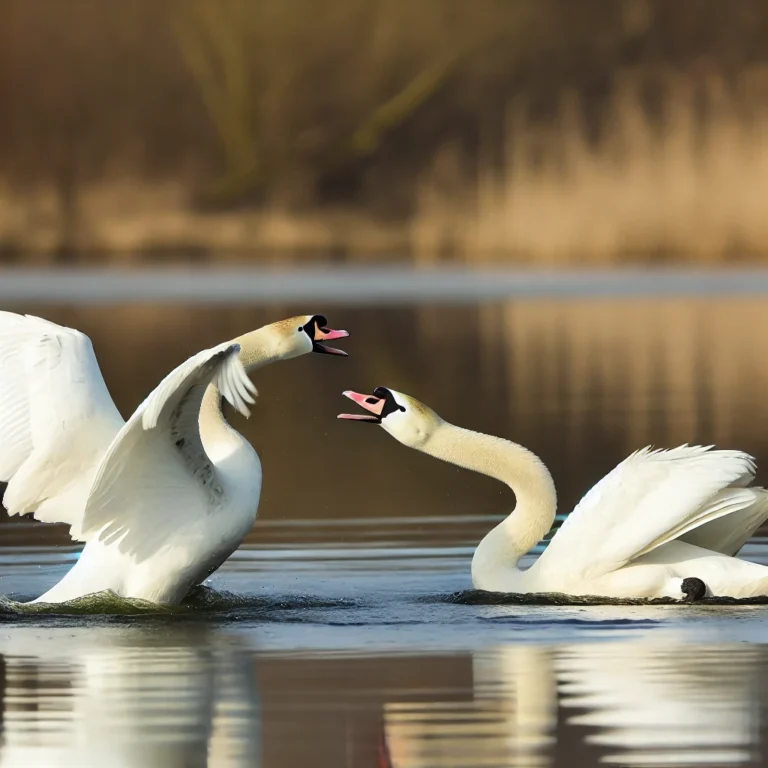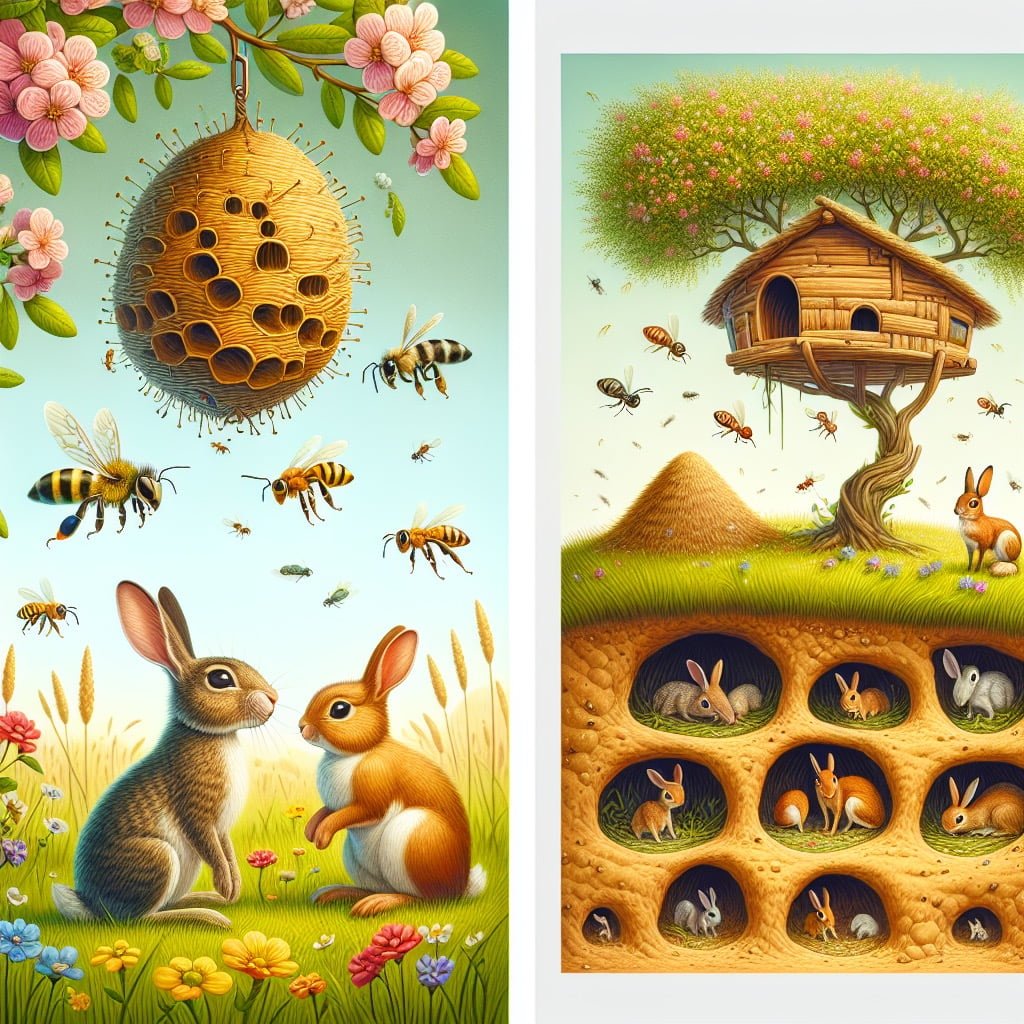Swans are one of the most majestic and graceful birds, known for their elegance and beauty. These fascinating creatures have inspired myths, legends, and symbols across various cultures. On this page, we’ll explore some interesting facts about swans, their behavior, symbolism, and unique characteristics.
1. Swans Are Among the Largest Flying Birds
Swans are known for their impressive size. Some species, like the mute swan, can have a wingspan of up to 10 feet. Their large wings allow them to fly great distances during migration.

2. Swans Mate for Life
One of the most beautiful aspects of swan behavior is their lifelong monogamous bond. Once swans find a mate, they typically stay together for life. Their relationship is often seen as a symbol of love and devotion.

3. Swans Communicate Through Vocalizations and Gestures
Swans use a variety of sounds and body language to communicate. The mute swan, while named for its quieter demeanor, still produces hisses and grunts, especially when feeling threatened or protecting its young.
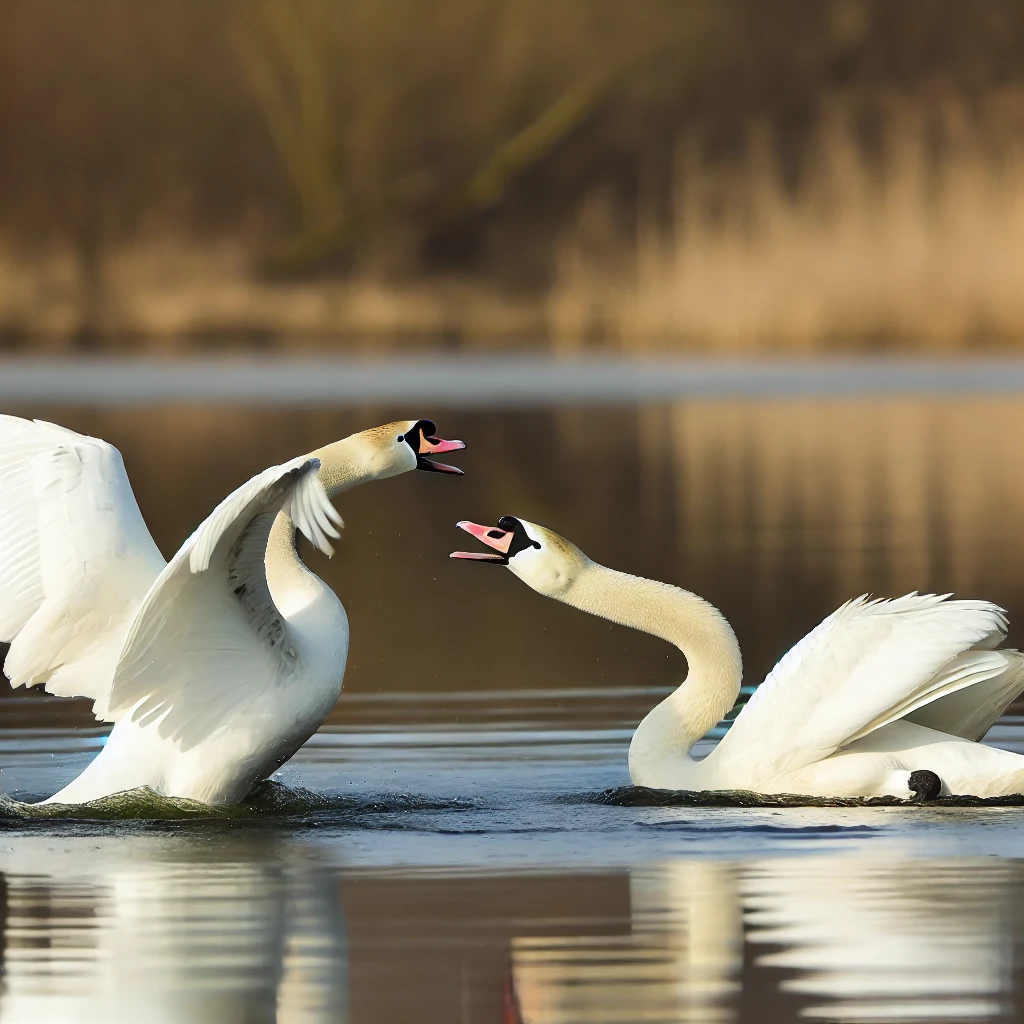
4. Swans Are Highly Territorial
During the breeding season, swans become fiercely protective of their nesting areas. They have been known to aggressively chase away other birds or animals that come too close to their nests.
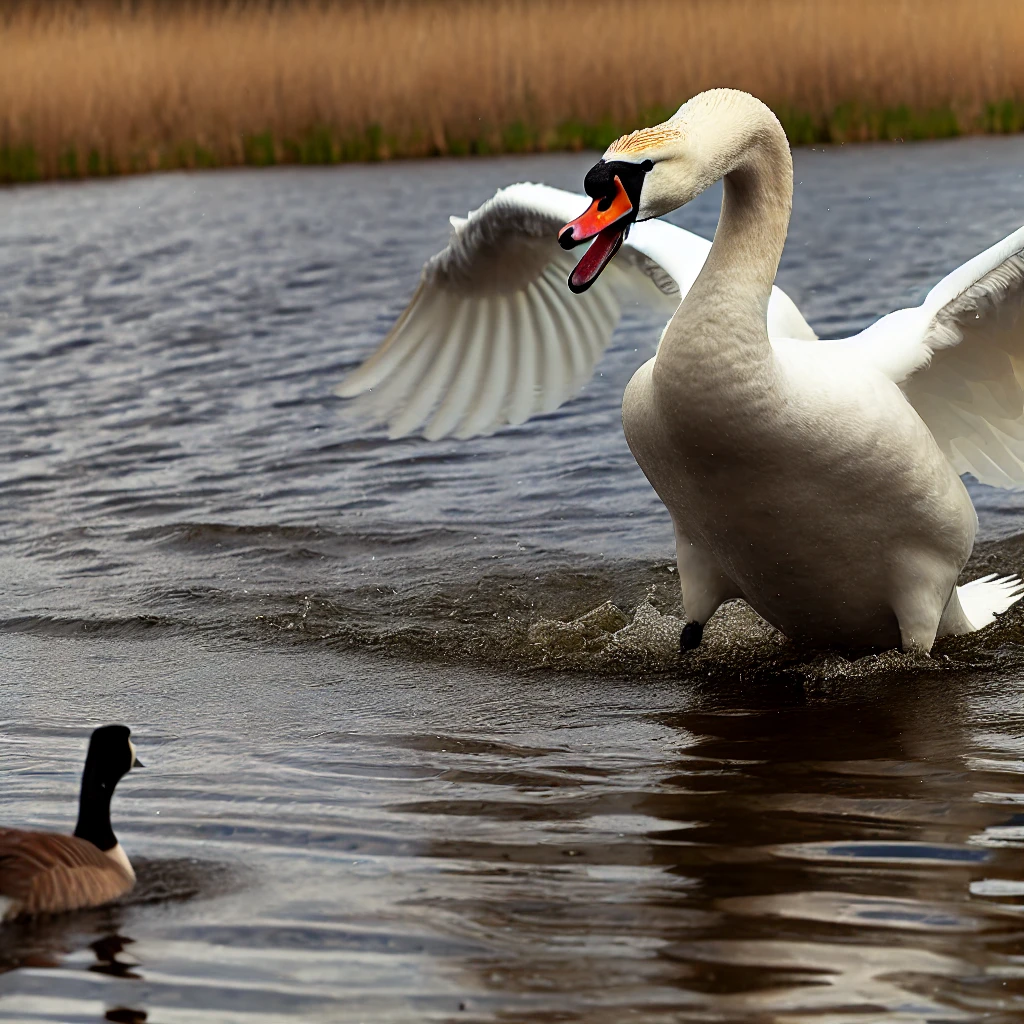
5. Symbolism of Swans
Throughout history, swans have been associated with beauty, grace, purity, and love. In many cultures, they represent the soul, transformation, and the power of love.
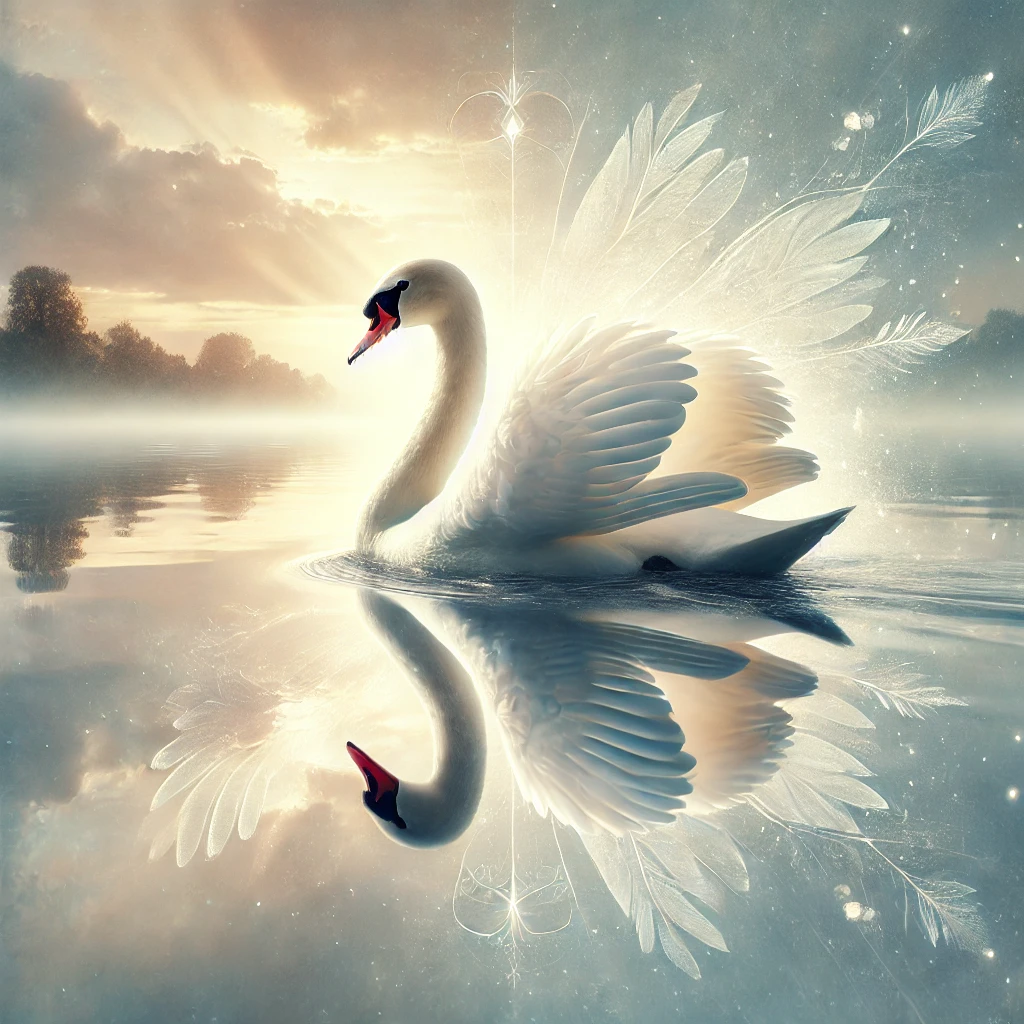
Facts About Swans – Frequently Asked Questions (FAQs)
Q: What are 5 interesting facts about swans?
- Swans can fly at speeds of up to 60 miles per hour.
- Swans can live up to 30 years in the wild.
- A group of swans is called a “bevy” when on land and a “wedge” when in flight.
- Swans have over 25,000 feathers.
- Some species of swans migrate thousands of miles each year.
Q: Why are swans so special?
Swans are admired for their beauty, elegance, and symbolic representation of love and fidelity. Their monogamous nature and their association with various myths and legends make them stand out in the bird kingdom.
Q: Can swans fall in love?
Yes, swans are known for forming strong, lifelong bonds with their partners. This is often referred to as “falling in love” in the animal kingdom.
Q: What is special about swan bird?
Swan birds are not only visually stunning but also possess impressive strength. They are also known for their synchronized swimming, where they perform graceful movements with their wings raised.
Q: What is unusual about swans?
One unusual trait is their ability to swim and sleep while floating on water. They also communicate through an intricate combination of sounds and body movements.
Q: What are swans a symbol of?
Swans symbolize purity, love, grace, and transformation. They are also seen as emblems of the soul in many cultures.
Q: What do swans symbolize in the Bible?
In the Bible, swans are sometimes seen as symbols of purity and fidelity. They are mentioned as clean animals, representing beauty and devotion.
Q: Are seeing swans good luck?
In many cultures, seeing swans is considered a good omen, symbolizing peace, love, and transformation. They are often seen as bearers of positive change.
Q: What is the lifespan of a swan?
Swans typically live between 20 to 30 years in the wild, depending on the species and environmental conditions.
More Facts about Swans
Q: What is a female swan called?
A female swan is called a “pen,” while a male swan is called a “cob.”
Q: Do swans have one partner for life?
Yes, most swan species are monogamous and mate for life. If a mate dies, the surviving swan may take a new partner, but this can take time.
Q: What do swans eat?
Swans are primarily herbivores, feeding on aquatic plants, algae, and small insects.
Q: Do swans sleep at night?
Swans can sleep at night, but they also nap during the day. They often sleep floating on water to stay safe from predators.
Q: How do swans show they are happy?
A swan shows contentment by gently bobbing its head or raising its wings in a relaxed manner.
Q: What are swans attracted to?
Swans are attracted to bodies of water with abundant vegetation, as well as potential mates during breeding season.
Q: How do swans show love?
Swans often perform courtship displays, including synchronized swimming and gently touching their beaks together, often forming a heart shape with their necks.
Q: Do swans like to be touched?
Swans are generally not fond of being touched by humans. They are wild animals and should be observed from a respectful distance.
Q: What do swans do when they’re happy?
Swans may wag their tails or perform a series of gentle vocalizations when they feel safe and content.
Q: How to tell if a swan is male or female?
Male swans (cobs) are typically larger than female swans (pens), with slightly more pronounced beaks.
Q: Can swans recognize humans?
Yes, swans have the ability to recognize humans, especially those who regularly feed them.
Q: What is interesting about swans?
Swans’ ability to mate for life, their impressive size, and their graceful movements make them fascinating creatures.
Q: What happens if one swan dies?
If a swan loses its mate, it will often go through a grieving process. In some cases, the surviving swan may eventually find a new partner.
Q: Do swans recognize faces?
Swans have been observed recognizing individual faces, especially of people who frequently interact with them.
Q: Will a swan remember me?
If you’ve regularly interacted with a swan, it may remember you and even approach you again in the future.
Q: How do swans say hello?
Swans often greet each other by bowing their heads or lightly tapping beaks.
Less known Facts about Swans
Q: What does it mean when a swan visits you?
In many cultures, a swan visiting you is seen as a sign of peace, transformation, or an upcoming positive event.
Q: Do swans talk to each other?
Yes, swans communicate with each other using a combination of sounds and gestures, especially during courtship or when protecting their young.
Q: Why is a swan hissing at me?
Swans hiss when they feel threatened or are trying to protect their territory or young.
Q: How long does a swan live?
Swans can live for up to 30 years in the wild, though their lifespan can vary depending on environmental factors.
Q: What does it mean when a swan wags its tail?
Tail wagging is a sign of contentment or happiness in swans.
Q: Why do swans put one leg up?
Swans sometimes stand on one leg to conserve body heat or to rest.
Q: How do swans say thank you?
Swans show appreciation or trust by performing gentle gestures, such as lowering their heads or vocalizing softly.
Q: What does it mean when a swan bobs its head?
Head bobbing is often a sign of excitement or courtship in swans.
Q: How do swans flirt?
Swans perform elaborate courtship displays, including synchronized swimming and neck arching.
Q: What does it mean when swans swim with their wings up?
This behavior is often a defensive posture, used to appear larger and ward off threats.
Q: What does it mean when swans growl?
Swans growl when they feel threatened or are protecting their territory.
Q: What to do if a swan hisses at you?
If a swan hisses, it’s best to back away slowly and give it space. The swan is likely feeling threatened.
Q: What happens if a swan loses its mate?
A swan that loses its mate may go through a mourning period and eventually find a new partner, though this can take time.
Q: What does it mean when a swan puffs up?
When a swan puffs up its feathers, it’s trying to make itself look larger, usually as a form of defense.
Summary: Amazing Facts About Swans
Swans are fascinating creatures with many unique traits that make them stand out among birds. One of the most well-known facts about swans is their ability to mate for life, forming strong bonds that symbolize love and fidelity. These large, graceful birds are also known for their impressive size, making them among the largest flying birds in the world.
Another key fact about swans is their territorial nature, especially during the breeding season. Swans fiercely defend their space, using both vocalizations and gestures to communicate with other swans and protect their nests. Swans also symbolize purity and grace, often appearing in myths and cultural stories throughout history. Their majestic presence on lakes and rivers has made them symbols of beauty and transformation across various cultures.
With their unique behaviors, powerful symbolism, and fascinating communication methods, swans continue to captivate people worldwide. These facts about swans showcase their importance in nature and human culture, making them truly special birds to learn about and observe.
Are you interested in more fun facts about animals? Click here to explore more fascinating animal facts.
External Sources
Learn more about swans from Wikipedia and Britannica
